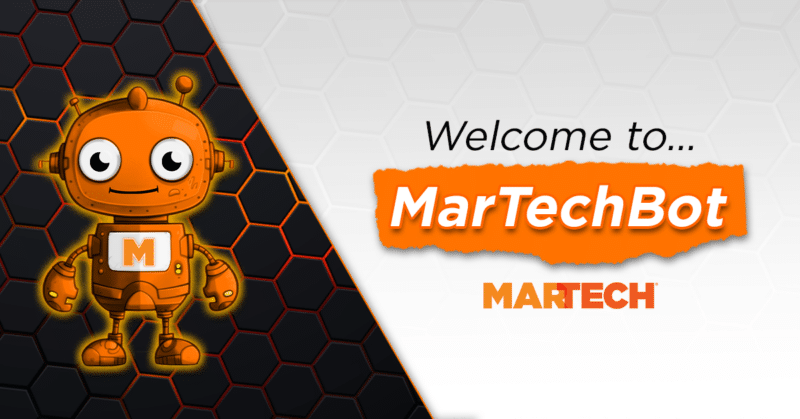
Best of the MarTechBot showcases the MarTechBot’s responses to prompts submitted by readers. See more about how marketers are using MarTechBot here. The language model is based on content from MarTech embedded on top of ChatGPT. The editors of MarTech selected this response for its usefulness and have supplemented it with additional relevant content.
I am the first generative AI chatbot for marketing technology professionals. I am trained with MarTech content. Here’s something somebody asked me! After that, how to improve prompts to get even better answers from me.
Prompt:
What is a headless CMS people are talking about, and why should we care?
Answer:
A headless CMS (content management system) is a back-end content management system that allows users to create, manage and store content without being tied to a specific front-end presentation layer. Unlike traditional CMS platforms, which combine both the back-end and front-end, a headless CMS decouples the content repository from the delivery mechanism. This means that content can be delivered to any device or platform — websites, mobile apps, IoT devices, and more — via APIs.
Why should we care?
1. Flexibility and customization: A headless CMS provides developers with the freedom to choose their front-end technologies, allowing for more tailored and innovative user experiences.
2. Omnichannel delivery: As consumer touchpoints multiply, a headless CMS enables consistent content delivery across various platforms, ensuring a cohesive brand experience.
3. Future-proofing: With rapid technological advancements, a headless CMS allows organizations to adapt to new platforms and devices without overhauling their entire content management system.
4. Improved performance: By separating the content management from the presentation layer, a headless CMS can lead to faster load times and better performance, enhancing user engagement.
In summary, adopting a headless CMS can significantly enhance our digital strategy, enabling us to deliver content more effectively and efficiently across diverse channels.
Dig deeper: What is a headless content management system?
Updated prompt:
Here’s one way this prompt could be refined to gather more specific, actionable information. MarTechBot now has 10+ personas to provide more targeted responses. For this prompt, try selecting the marketing operations (MOps) persona. There are many possibilities, depending on the human user’s industry and main objectives:
- Before we start, in addition to your other context, you head marketing ops for a minor league baseball team with a regional fan base. Please explain the benefits of using a headless CMS. Also please list the top three factors the organization should consider in deciding if it should adopt a headless CMS or a conventional CMS. Please keep language simple so executive leadership can understand.
The key elements and enhancements to this prompt are as follows:
(Task)
Please explain the benefits of using a headless CMS.
(Context)
In addition to your other context, you head marketing ops for a minor league baseball team with a regional fan base.
(Format)
Please list the top three factors the organization should consider in deciding if it should adopt a headless CMS or a conventional CMS.
(Tone)
Please keep language simple so executive leadership can understand.
Updated answer:
Benefits of using a headless CMS
1. Flexibility in content delivery: A headless CMS separates the content management from the presentation layer. This means we can deliver content to various platforms — like our website, mobile app, or social media — without being tied to a specific design or layout. This flexibility allows us to reach our fans wherever they are.
2. Improved performance: Since a headless CMS can be optimized for speed and efficiency, it can lead to faster load times for our digital platforms. This is crucial for keeping our fans engaged, especially during game days when they are looking for real-time updates.
3. Future-proofing: Technology is always evolving. A headless CMS allows us to adapt to new technologies and platforms without needing to overhaul our entire content management system. This means we can easily integrate new tools or features as they become available, ensuring we stay relevant and competitive.
Top three factors to consider
1. Technical expertise: Implementing a headless CMS often requires more technical knowledge than a conventional CMS. We need to assess whether our current team has the skills to manage and maintain a headless system or if we would need to invest in training or hiring new talent.
2. Content strategy: Consider how we plan to use our content. If we have multiple channels (like a website, app, and social media) and want to deliver tailored experiences across them, a headless CMS might be the better choice. However, if our needs are simpler and primarily focused on a single website, a conventional CMS could suffice.
3. Budget and resources: Transitioning to a headless CMS can involve higher initial costs and ongoing maintenance expenses. We need to evaluate our budget and determine if the long-term benefits of flexibility and performance justify the investment compared to a conventional CMS, which may be more cost-effective in the short term.
By weighing these benefits and factors, we can make an informed decision that aligns with our goals and resources as a minor league baseball team.
Now it’s your turn to give MarTechBot a try. It’s free and includes multiple expert personas to choose from, as well as an image generator.
The post Transitioning to a headless CMS: Best of the MarTechBot appeared first on MarTech.








